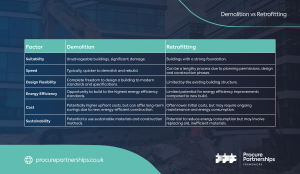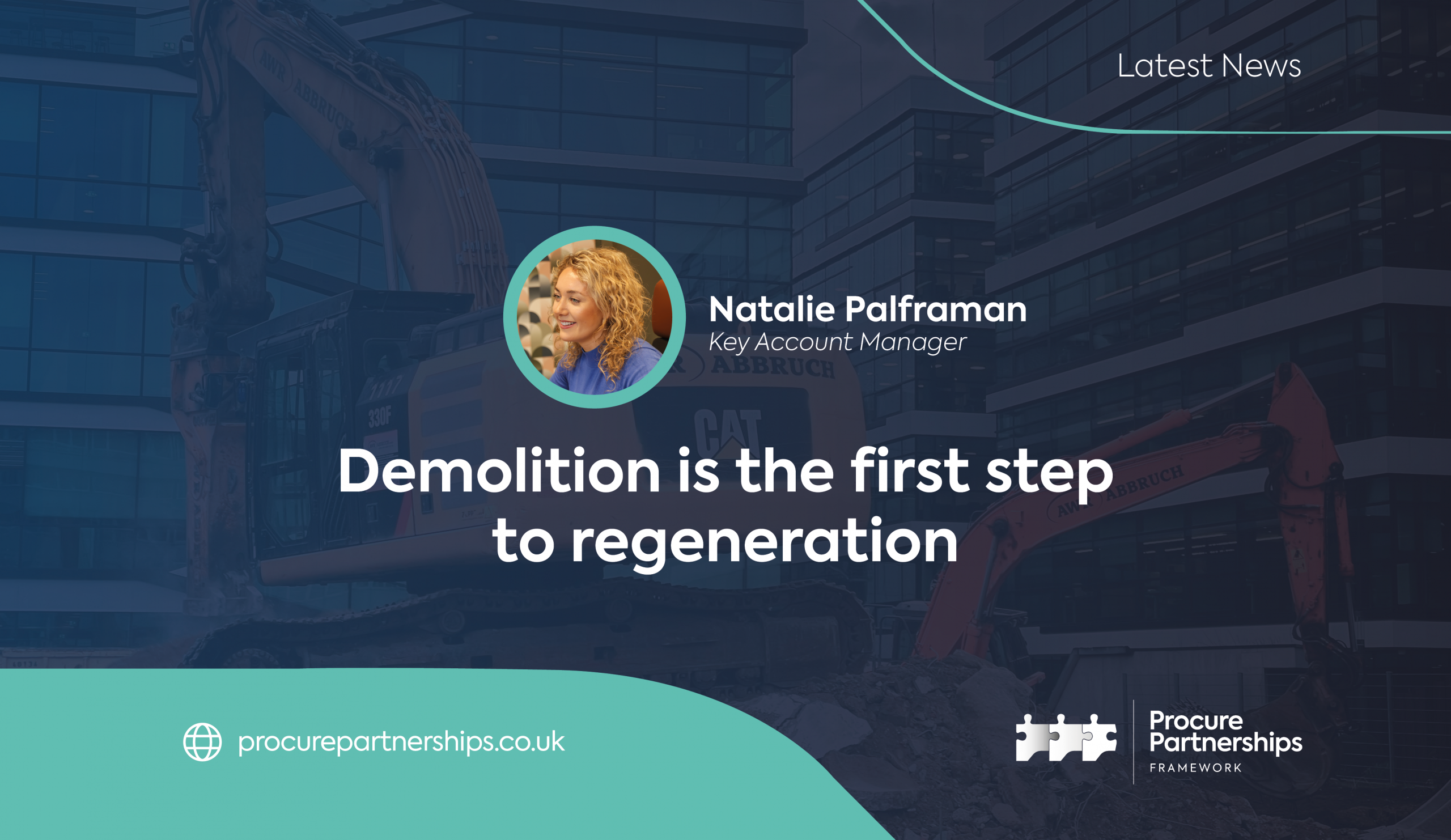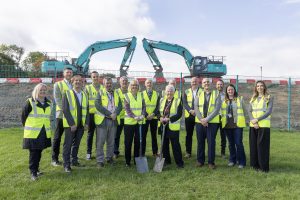Our towns and cities are constantly evolving. The buildings that once defined our urban landscapes, serving as the backbone of our communities and economies, have now become outdated and in some cases derelict. As our lifestyles, technologies and needs grow, so too must our built environment.
The growing number of underutilised retail, office and industrial spaces has led to a concerning rise in unsafe and uninhabitable buildings, often due to neglect. This raises a critical question – should these properties be restored through retrofitting or demolished to pave the way for new developments?
In this blog, we’ll explore why demolition is a catalyst for community regeneration, setting a president to transform struggling town centres and unlocking the potential of untapped brownfield land for housing, leisure facilities and other essential amenities such as hospitality and retail.
Where to start? We need regeneration
Regeneration is about unlocking potential, this results in boosting productivity, pay, jobs and living standards.
Currently, on average, one in seven shops lie empty in our town centres with 1,800 shops closing last year alone. Add to this, almost 250,000 homes being classified as empty, with 1.2 million people on the social housing waiting list. It’s safe to say regeneration from both a commercial and domestic perspective is needed.
So where should we start? In many cases, the starting point for this is demolition. Demolishing to rebuild is emerging as a more efficient and effective strategy for regeneration. It allows for reconfiguration of town centres to create new buildings which are more adaptable to ever-changing requirements, compared to refurbishing severely dilapidated existing buildings.
By proceeding with demolition projects, authorities can attract investment from remediated land and provide much-needed housing and amenities for the local communities.
It can also lead to positive public perception. When shops or sites have been left stagnant or derelict, public unrest usually ensues. Seeing something happening, demonstrates real tangible progress is being made. It’s a great way to build excitement and support for the project.
Unlocking land potential
Local authorities are often in a difficult position of ownership of unused land, which can represent a significant untapped asset. For many reasons, such as funding conditions or planning constraints, these landholdings frequently remain idle whilst the new end use of the asset is determined. The best way to make progress in these situations is to progress necessary enabling works.
Such works, including remediation, infrastructure upgrades, waste removal and site preparation are needed for transforming raw land into development-ready sites. By investing in these upfront costs, local authorities can significantly increase the value of their land assets.
Brownfield land accounts for 8.7% of land in England. The government understands the importance of redeveloping on brownfield land. Not only does utilising this land reduce pressure on developing greenbelt sites, the allocation of money through Brownfield Land Release Fund emphasises the importance of building new homes and facilities.
Demolition vs. Retrofitting
That being said, not all outdated buildings will warrant demolition. Retrofitting can be a viable option for buildings with a strong foundation. However, a thorough building survey is crucial to determine its suitability and cost effectiveness.
Retrofitting existing buildings can be a sustainable approach to reducing carbon emissions. While improving insulation and upgrading heating systems can enhance energy efficiency, achieving substantial emission reductions often requires extensive overhauls including works such as installing heat pumps.
Decarbonising buildings is critical to achieving net-zero carbon emissions by 2050.
Whilst retrofit will avoid the carbon emissions associated with demolition – demolishing older, inefficient buildings can offer opportunities to redevelop a site more sustainably.
Here’s a table summarising some of the key considerations for demolition vs retrofitting:

At Procure Partnerships Framework we understand every project is unique. For instance, we find on smaller standalone demolition projects, working directly with a specialist demolition contractor can often be more cost-effective than appointing a main contractor to deliver this.
To maximise the impact of your available funding and accelerate the overall spend programme, we recommend taking a phased approach. Prioritising the demolition phase allows for immediate progress and demonstrates tangible results to the public. This initial investment can then be leveraged to secure additional funding for the subsequent construction phase, ensuring a continuous and efficient project timeline.
Our demolition contractors are committed to delivering safe, efficient and comprehensive demolition services. With expertise in a wide range of projects, from full building demolition to site clearance and waste management, we offer tailored solutions to meet your specific project needs.
Our procurement expertise and knowledge of demolition and enabling works allows us to offer a reputable and trusted national framework service, going above and beyond to support each Framework User throughout their project lifecycle.
Want to learn more? Contact me today at 0795 699 8799 or via email at natalie@procurepartnerships.co.uk Let’s discuss your procurement needs and how we can support your project today.



